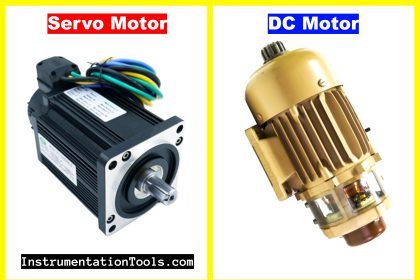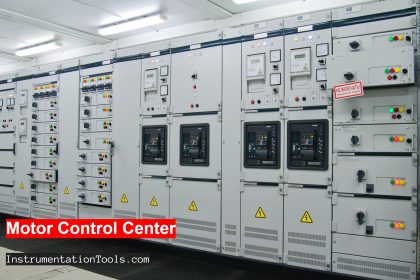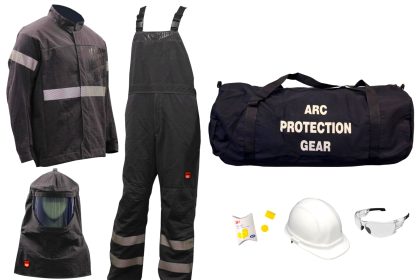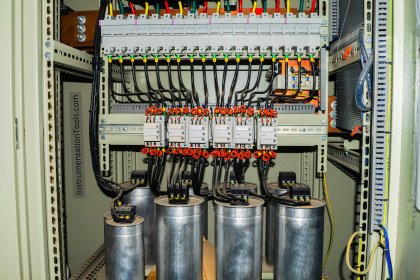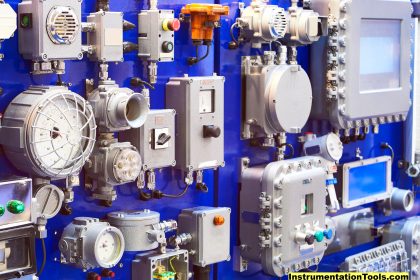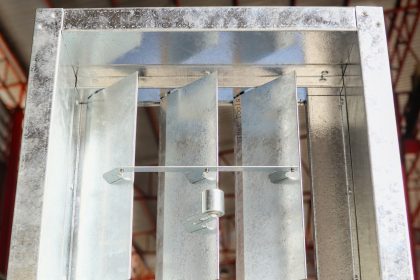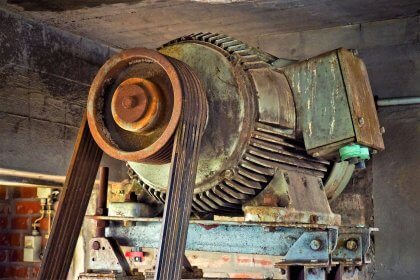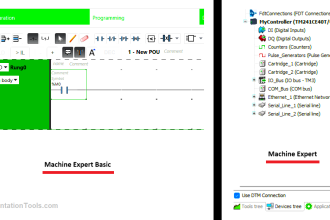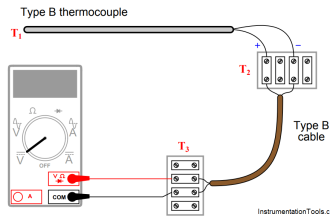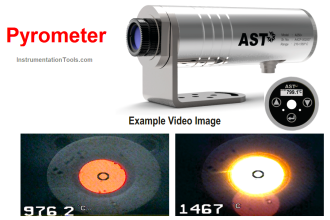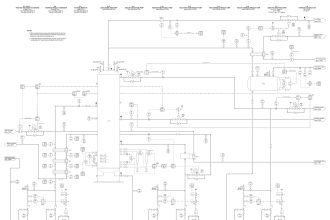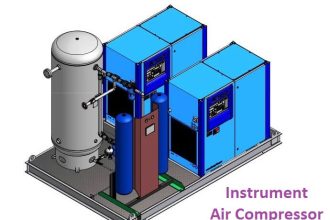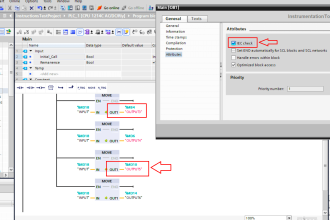Basically, there are four types of electrical wiring procedures.
They are
- Cleat wiring.
- Batten wiring.
- Casing and caping.
- Conduit wiring.
Cleat Wiring
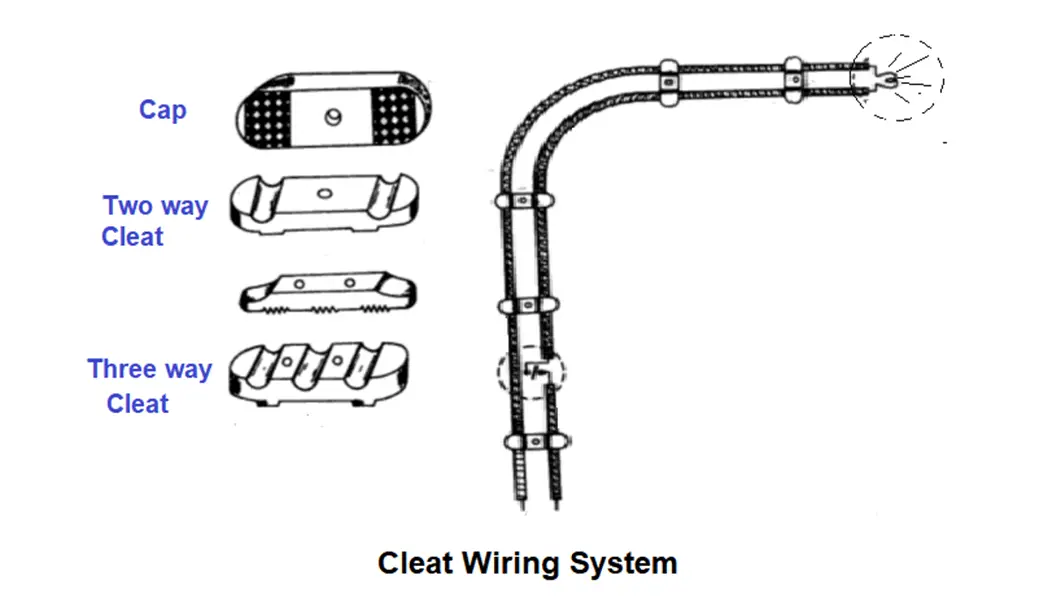
In this type of wiring, the insulated conductors are supported on porcelain or wooden cleat. The cleats have two halves.
One base and another cap. The cables are placed in groves in the base plate and a cap is placed on it.
Cables are held in porcelain or wooden cleats at 6mm above the walls or ceiling.
Cleat wiring is generally used for temporary wiring purposes not as a permanent system of wiring. It is not preferred on domestic premises.
But, it is quite suitable for taking a temporary connection in industrial construction work.
Advantages
- This fitting is very easy and cheap.
- This method was very good for temporary fitting where some kind of construction is going on.
Disadvantages
- This fitting doesn’t look good.
- As the cable is kept out, so it has the effect of every kind of environment, a low-quality wire spoils quickly.
Batten Wiring
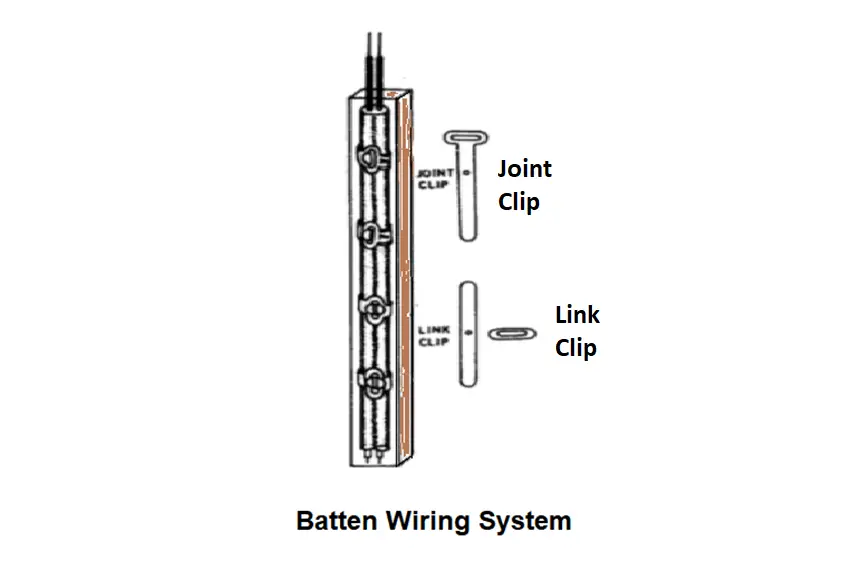
This wiring system is a very old method in which all wires are tied with an iron clip on top of a wooden strip (batten) and this collection is used in large quantities so that the wire is very well sealed with some wooden strip.
This clip is like a belt to a wristwatch. Which is placed on top of the first strip and then by laying wires on top of the strip, it is tied well with this clip.
Advantages
- Wiring is simple and easy to do
- This wiring method is cheaper than another wiring.
- This wiring also looks great.
- It is also easy to repair this wiring
Disadvantages
- We can not do this wiring in the open outside the house
- This wiring is not protected from the external environment because it has a great impact on the weather.
- The heavy wire cannot be used in this wiring
- This wiring is up to 220 V only.
- Require more cables and wires.
- Cable sag may take place after a long period.
Casing and Capping
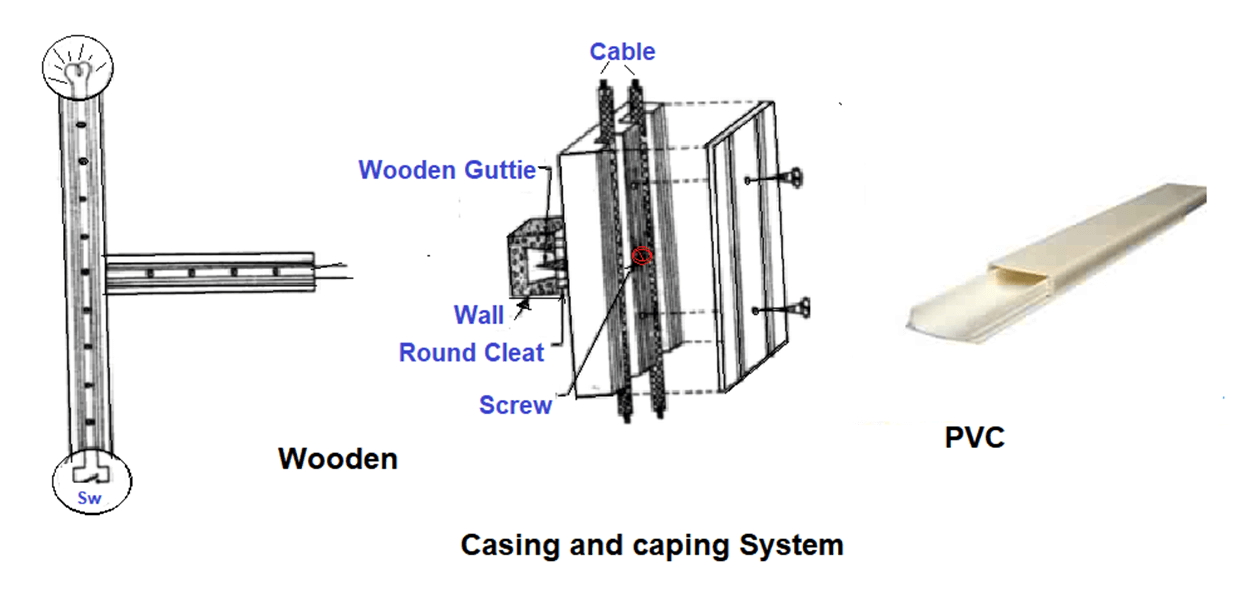
This type of wiring is very popular. Because this wiring system is very easy to do and it is also very cheap.
If it is done above the walls, then anyone can fit it very easily in this wiring fitting, the wires are placed inside the plastic casing or wooden enclosures.
It is a kind of open fitting it is covered from the top so that it looks good and looks more secure.
Advantages
- This wiring system is much easier and cheaper than other wiring systems.
- This wiring system is very strong and long-lasting.
- One can make changes to this wiring very easily.
- There is no risk of electric shock as it covers the wires well.
- If phase and neutral follow a different path, repair becomes easy.
Disadvantages
- if there is a fire in the wires inside it, then this whole fitting can burn.
Conduit Wiring
The conduit wiring system is of two types.
- Surface mounting.
- Concealed conduit wiring.
Surface mounting conduit wiring system
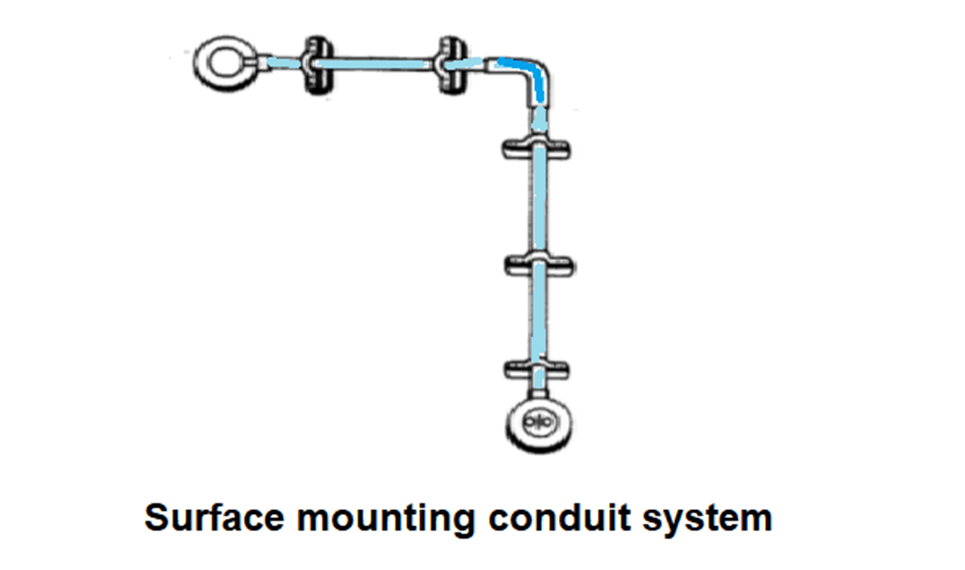
Conduits carrying the PVC insulated wires can be installed on the surface of the walls or concealed in the walls and the ceiling.
Concealed conduit wiring
Conduit wiring is a system, basically, wires or cables which are routed in metal or plastic inside the wall.
Conduits isolate wires to avoid exposure, thereby reducing the risk of fires, short circuits, fire, electrocution.
Modern practice is the hidden installation of the conduit in the plaster of the wall, so that appearance of the house or the building remains unaffected. Conduits are available in standard lengths.
The conduits system for each circuit must be erected completely before any cable is drawn in.
Advantages
- A conduit wiring system is best for domestic and commercial installations.
- It provides proper protection to the installation against shock, fire hazards mechanical damage.
- Protected from external damage due to rodents, short circuit.
- Conduit is durable and strong, can last for a long time.
- Great protection as it is more robust.
Disadvantages
- If cable got damaged. replacement of cable is difficult compared to any other.
- Requires skill in running the conduit and wires through it.
- The cost, time, and efforts of installation are high.
Reference: Engineering Basics: Electrical, Electronics, and Computer Engineering by T.Thyagarajan
Read Next:

